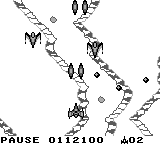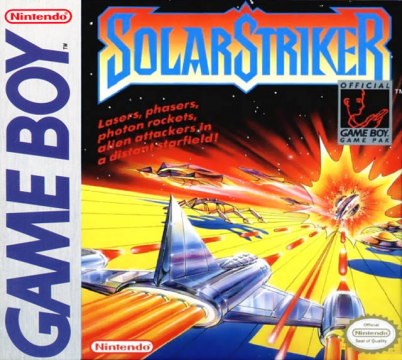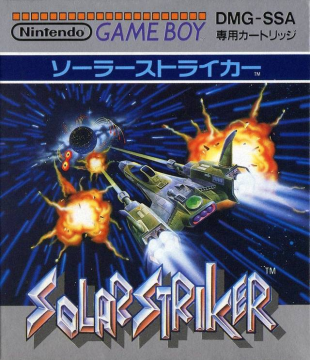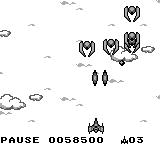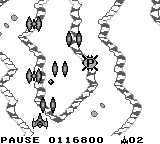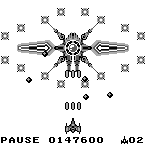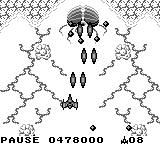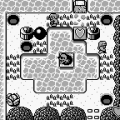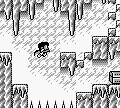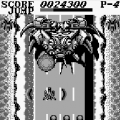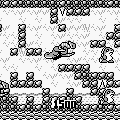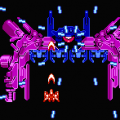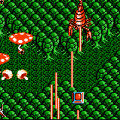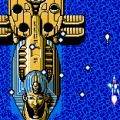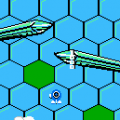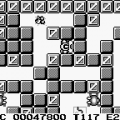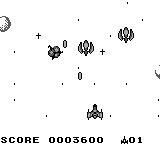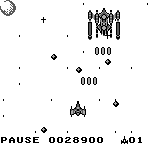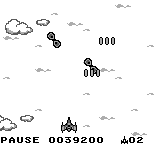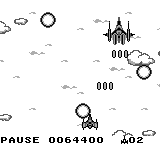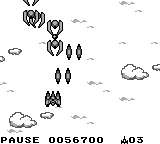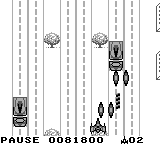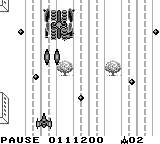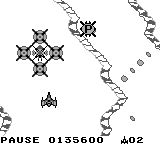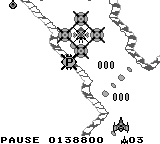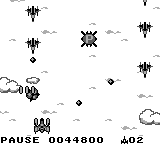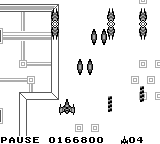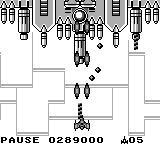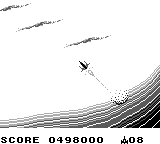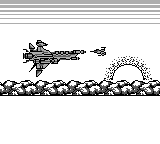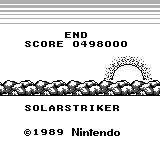Nintendo has long been known for creating games that cover a wide range of genres. By 1989, they had their fair share of platformers, sports titles, puzzle games, and action/adventure outings. But up until that year, they had never created a shoot-em-up on their home console. Granted, the NES had games like Xevious, 1943, and Gradius, but such games were released by third-party developers. Nintendo had yet to get their feet wet with 2D shooters. In comparison to the outpouring of blast-a-thon games from other companies over the past three decades, they seemed to be rather gun shy when it came to the shoot-em-up genre. Perhaps the perceived reluctance can be traced back to their early days of arcade game development.
Nintendo R&D1 produced Space Fever, Space Firebird (and its remake Space Demon), and Radar Scope between 1979 and 1980. All three games were various iterations of the basic gameplay elements of Taito’s Space Invaders and Namco’s Galaxian. None of them made a lasting impact and eventually faded into obscurity. While Radar Scope did enjoy moderate success in Japan, it sold so poorly in the US that roughly 2,000 unsold units were converted to house Shigeru Miyamoto’s 1981 hit Donkey Kong which was based on Radar Scope’s circuit board.
Needless to say, Nintendo’s track record for making 2D shooters wasn’t great. And since the success of Donkey Kong took off, they’ve taken more of a hands-off approach to scrolling shooters. However, they did briefly return to the genre on January 26, 1990 when they released SolarStriker– the very first shoot-em-up for the Game Boy. It was developed by Nintendo R&D1 with Gunpei Yokoi at the helm as Producer in cooperation with Minakuchi Engineering- a smaller game development company. While information is scarce regarding the depth of their involvement, the staff credits reveal that Minakuchi was responsible for the audio work and at least partially involved in some aspect of the game’s overall design.
The story begins in the year 2159. Earth has been attacked by hostile forces from the planet Reticulon. The Earth Federation Government was formed to protect the planet from extraterrestrial threats. But the military might of the Reticulon forces were too much for the Federation Army, and Earth had suffered a crushing defeat. But there is one last chance. Meanwhile, the Federation Army had a secret base on the Moon where Earth’s finest scientists developed the ultimate fighter ship that would be capable of vanquishing the alien invaders. They called it “SolarStriker”.
Curiously, the first thing you’ll notice is that you’re flying in a ship that has a striking resemblance to the protagonist spacecraft in Galaga (only slightly more detailed). It seems as if Nintendo still had a habit of closely borrowing from other games in the genre even by 1990. On the surface, the game may seem to be very simplistic in its presentation – you fire generic weapons, fight mostly generic enemies, and they fly around in generically predictable patterns. With a little practice, you can easily dispose of most waves of enemies before they even make it on the screen in the early stages. The game was clearly designed to ease novice players into the curves that game will later throw at you.
Your weapons are a missile and several upgrades to increase your offensive capabilities. You can increase your weapon’s power by destroying a special pod that leaves behind a power-up icon. The missiles have 4 levels of power– single shot (default), double shot, triple shot, and turbo missiles. Upgrading to the double shot only requires one power-up icon to be collected. The additional higher boosts require two power-up icons each. Although it seems a little backward that your ultimate weapon takes you back down to a double shot volley of bullets (instead of building on the triple shot), it’s actually very effective at cutting through waves of alien ships much quicker than the other downgraded weapons.
Nintendo’s influence can perhaps be best seen in how forgiving the game was in an uncharacteristic manner for the genre at the time. If your ship is destroyed, instead of losing all your weapon upgrades, you merely lose one upgrade level. So if, for example, your last ship has the turbo missiles when it was destroyed, the next ship would be downgraded to the triple shot, and so on. While it wasn’t the only shooter game to do this, it was certainly a rarity. Perhaps this was a decision from the R&D1 team to keep with their reputation of making games that were challenging, yet accessible to the average player. It can be a bummer to have to grab an extra two power-up capsules again, but it still beats being forced to start from scratch like you do in most other shooters.
The game itself isn’t all that lengthy. It’s only six stages and the first three are fairly easy. In fact, the whole game can be finished in well under 30 minutes. The game’s only real twist is that it suddenly tries to kick your butt once you reach the fourth stage and onward. As can be expected, there is a boss to fight after each stage. In the initial three stages, the normal enemy ships attack in easy patterns to follow and the bosses have fairly simplistic attack patterns as well. Stage four attempts to kick things up a notch by having enemies that fly in a more aggressive pattern and it becomes far easier to fall victim to a stray bullet.
Not-so-coincidentally, the boss for this stage (and the next one) is nothing short of loathsome. It’s a ground-based fortress that constantly hurls a volley of bullets all over the place. It’s tricky to destroy because you can only damage the central core of the enemy while also being forced to bob and weave in a tight space. Beyond level four are enemies that are increasingly harder to destroy– especially the Blazer, which can only worth attacking if you have the most powerful weapon upgrade. The good news is that successfully destroying Blazers allows you to rapidly rack up enough points to gain an extra ship (which has nice 1Up chime) much quicker than if you didn’t bother with them at all. Oddly enough, the final boss in stage six is super easy and requires little concentration to destroy.
The visual quality in SolarStriker isn’t that bad. It’s not the best that the Game Boy has to offer, but it was an appreciable attempt for an early GB title. The game’s stages follow a logical progression of scenery. You first start off in a starfield in space. In the second stage, you enter the atmosphere of the enemy’s home planet. The next stage has you flying above a city highway, complete with individual lanes and everything. And the later stages progress like so. So while it isn’t as flashy as other shooters to come after it (and before for that matter), one can appreciate the intelligent progression of surroundings as subsequent areas are reached.
The game’s audio quality very enjoyable. It has the normal sound effects you would associate with a 2D shooter. The music is pleasant to listen to, albeit very repetitive. Even so, the repetition doesn’t hurt the game much since the game itself is a short ride. In a way, it only seems right that the music doesn’t drone on before repeating in this case. Some of the musical selections are quite memorable since veteran players can probably still recall the music to the first area many years after playing the game. Avid fans of the ’90s cartoon Captain N: Game Master might recognize that the music from stages one and two were featured in the episode “The Trouble with Tetris”. One tune that especially stands out is the music in the fifth stage. It perfectly conveys the feeling of cautious urgency now that you have flown deep into enemy territory.
In all, SolarStriker is great if you want to play a game that you can complete quickly. Even with its steeper difficulty towards the latter half of the game, the initial run is still relatively easy compared to games like the R-Type and Thunder Force series. While it could be considered by some to be too basic for experienced players, SolarStriker works as an introduction to the genre for beginners. Plus, you can unlock a harder difficulty level by finishing the game and pressing the select button at the title screen, so it’s definitely worth a look if you’re looking for a greater challenge. Otherwise, if you’re interested in having the full-scale 2D shooter experience, you’re interested might be best served elsewhere. Either way, the game is still worth a look.
